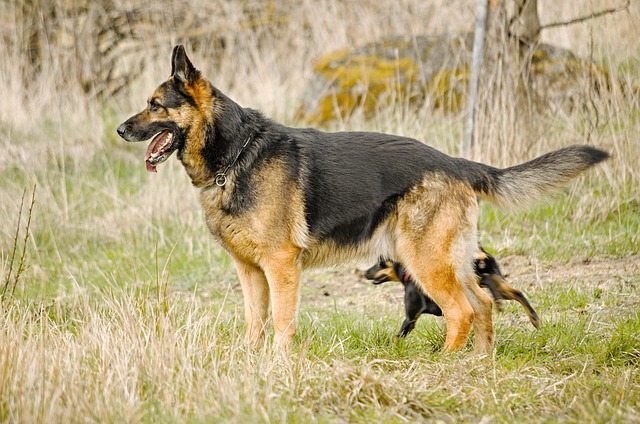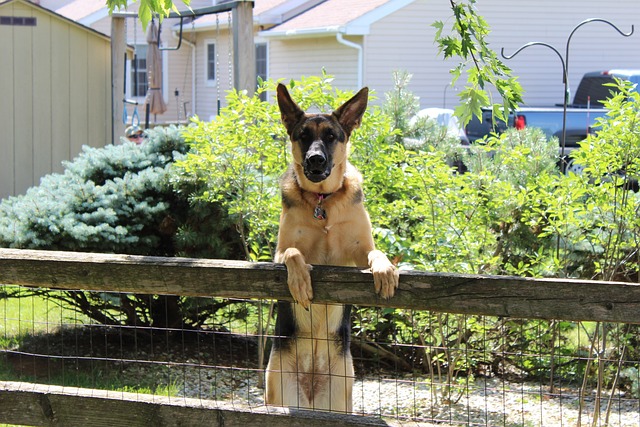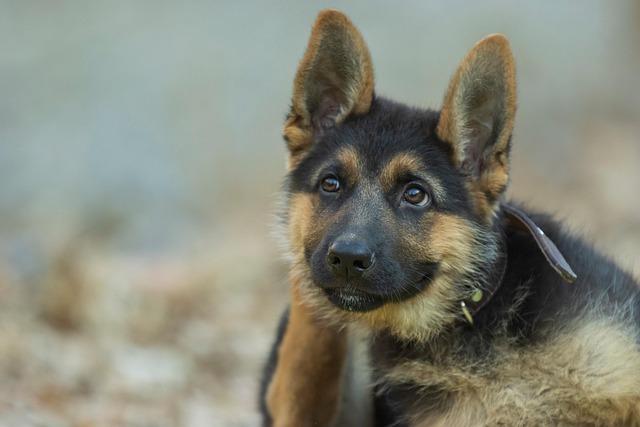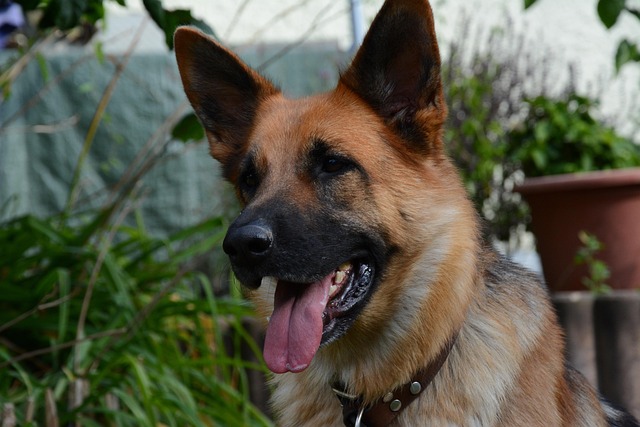The German Shepherd’s trip started in 1899 when Captain Max von Stephanitz set out to create the perfect multi-purpose dog. The sort of thing I love about today’s German show line German Shepherd is how it represents one amazing branch of its legacy. These dogs are bred specifically to combine beauty and athletic prowess while keeping the breed’s legendary intelligence.
Working line German Shepherds shine in law enforcement and military roles. Show line GSDs have a calmer temperament that works especially when you have a family. These loyal companions are eager to please and have a more relaxed nature. Both lines share core traits like high energy levels and remarkable intelligence.
Let us walk you through the essentials of choosing and owning a show-line German Shepherd. You’ll learn about different bloodlines, find reputable breeders, and make smart decisions about investing in your future companion.
Understanding Show Line German Shepherds
“Breeding worth and show worth are two fundamentally different things which need not have anything to do with each other; and further, a show award must never be taken as a judgment of breeding value, but only, and this too with reservations, as an opinion that a dog might be suitable for breeding.” — Max von Stephanitz, Founder of the German Shepherd Dog breed
Show line German Shepherds showcase a remarkable development in the breed’s history since the original standardization. These magnificent dogs keep their iconic German Shepherd looks but have unique traits that make them different from their working line relatives.
Origins and history of the breed
The story of German Shepherd lines began in 1899. Captain Max von Stephanitz bought a dog named. He renamed the dog Horand von Grafrath and registered him as the first official German Shepherd Dog. The Captain then created the Verein für Deutsche Schäferhunde (Society for the German Shepherd Dog).Hektor Linksrhein at a dog show
The original focus was simple. Von Stephanitz believed “a dog was worthless if it lacked the intelligence, temperament, and structural efficiency that would make it a good servant of man”. His straightforward motto reflected this belief: “Utility and intelligence”.
The breed’s popularity grew, and different breeding paths emerged. American breeders stuck with the Pfeffer and Odin bloodlines after World War II. This choice created a distinct type that looked different from German specimens. These differences led to what we now call show lines.
Show line vs. working line: Key differences

Show and working lines differ mainly because of their breeding goals. Working lines stay true to the breed’s original focus on performance, intelligence, and work ethic. The looks don’t matter as much. Show lines emerged because many GSD owners “did not have the time, experience, or patience to properly train and employ a working line GSD”.
Show line German Shepherds stand out with several traits. They have lower energy levels and drive. Their temperament is more relaxed and balanced. These dogs make excellent family companions. They’re smart but less intense than working lines.
Show line GSDs need less mental stimulation than working lines. This trait means they’re less likely to become destructive when bored. These dogs tend to be more forgiving and safer around children.
Physical characteristics of show line GSDs
Show line German Shepherds look unique compared to working lines. Their distinctive features include a sloped/roached back with angled hindquarters. The body structure appears broader than the working lines. Most have classic coat colors – black and tan or red and black in saddle or blanket patterns. Their hindquarters show more angles, especially in American/Canadian show lines. The coat grows longer and thicker.
Two main show line types exist today: West German and American/Canadian. West German lines usually have black and red coats, slightly angled hindquarters, and a mild “roached” back. American lines feature more extreme angles in their hindquarters and narrower faces.
These specialized breeding choices haven’t changed the core GSD traits of loyalty, confidence, and intelligence. The breed’s double coat remains intact with its dense, harsh outer layer and soft undercoat. Regular brushing helps manage shedding.
Types of Show Line German Shepherds
Show line German Shepherds have developed unique traits in different regions that showcase varied breeding philosophies and standards.
West German show line characteristics
West German show line German Shepherds stand out as the most balanced type among show lines. These dogs maintain stronger working abilities than other show varieties because German breeding rules require all breeding stock to have schutzhund or herding titles along with conformation evaluations.
West German show lines display these features:
- Deep red pigmentation rather than tan coloring with black saddle patterns
- Thicker bone structure and deeper chests compared to American lines
- Slightly sloped backs that act as natural shock absorbers
- Smooth, graceful movement in the show ring
These GSDs bridge the gap between working lines and esthetic show dogs. Their striking looks and functional build make them ideal candidates for both show rings and family pets.
American show line traits

American show line German Shepherds have taken a different path in their development. Breeders focus more on conformation showing and less on working capabilities.
The signature feature of American show lines is their extreme hindquarter angulation. This creates a distinctive sloped topline that became popular in American show rings around 1970. A leading expert called this trend “a fashionable fault” before it became the accepted standard.
American show GSDs showcase these traits:
- Taller, longer frames with lighter bone structure
- Narrower heads and bodies than German lines
- Classic black and tan saddle patterns
- Minimal differences between male and female physical features
International variations and standards
The German Shepherd world extends beyond West German and American types. The SV (German registry)’s strict breeding requirements shape German show lines globally through health testing and performance evaluations.
Australia’s National Kennel Council made an interesting move in 2012. They now recognize two distinct varieties: the traditional Stock Coat and Long Stock Coat. Both types have undercoats but differ in their outer coat’s length and texture.
European breeding standards stay true to the original German model, unlike the American approach. Canadian show lines mirror their American counterparts, creating what many call “North American Show Line German Shepherds.”
These international variations keep the GSD’s medium size requirements – males measure 60-65cm and females 55-60cm at the withers. Each region puts its spin on structural emphasis and temperament priorities.
The Evolution of Show Line German Shepherds
The German Shepherd’s story shows how a practical working dog turned into a specialized show animal – one of the biggest changes in dog breeding history. These dogs started as intelligent working companions rather than showpieces. Show line German Shepherds teach us how breeding choices can reshape a breed across generations.
From working dogs to show champions
Back in 1889, Captain Max von Stephanitz created the breed with a simple motto: “Utility and intelligence.” He didn’t care much about looks. A dog had no value to him if it lacked smarts, the right temperament, and the body structure needed to work. German Shepherds earned their reputation through their herding skills and stable minds.
The split between show and working lines took off after World War II. American and German shepherds went their separate ways. American breeders stuck with the Pfeffer and Odin bloodlines, while German breeders had to rebuild everything from scratch after the war.
Around 1949, some quality dogs started showing up at German shows. These dogs came from ‘type’ breeding without Pfeffer’s direct influence, though his ancestors played a part in their bloodline. Back in America, breeders created their beautiful style through Pfeffer. They strengthened these traits by breeding related dogs and mixing in descendants of his half-brother Odin vom Busecker-Schloss.
The 1950s saw American breeders reach out for fresh blood. They brought in dogs from the Klodo Boxberg and Odin Stolzenfels lines. Troll von Richterback, the 1957 Grand Victor, left his mark on American lines. His offspring had amazing rear drive and strong hindquarters, but they came with some weak points too.
Breed standard development
Von Stephanitz’s original breed standard put mental stability and usefulness first. This standard spelled out exactly how each part of the dog should work together – from structure to movement to attitude.
Germany brought in regular breed surveys in 1922. Each dog got detailed feedback and breeding recommendations. This scientific method stood apart from American practices, where breeders could follow their path.
The 1960s brought big changes with powerful stud dog families in America. Lance started a new chapter for American shepherds. He brought attention to angulation, topline, and sidegait. His popularity showed how Americans were moving away from imported dogs.
German standards stayed stricter than their American counterparts. Even today, European show line dogs must earn working titles before their puppies can be registered – just like working line dogs. That’s why they’ve kept more of their working abilities than American show dogs.
What to Look for When Buying a Show Line GSD
Getting into a quality show line German Shepherd needs you to think over several significant factors that go beyond looks. You need to understand what makes an exceptional specimen. This knowledge will help you make an informed decision when these magnificent dogs join your family.
Temperament evaluation
Quality German show line German Shepherds have a well-balanced temperament with strong nerves. The breed standard states they must be “self-assured, absolutely natural and good-natured as well as attentive and willing to please”. These dogs should have instinctive behavior, resilience, and self-confidence to serve as companions and family protectors.
Watch how the dog reacts to new environments, strangers, and unexpected stimuli when you evaluate temperament. Quality show line GSDs stay calm despite their natural protective instincts. They should never show extreme reactivity, fear-based aggression, or excessive shyness. Yes, it is worth noting that. Genetics determines 20-60% of temperament, which makes stable bloodlines vital for selection. Temperament is highly heritable
Physical structure assessment
A proper show line GSD must meet specific structural standards. Males stand 60-65cm at the withers and weigh 30-40kg. Females measure 55-60cm and weigh 22-32kg. The trunk length should be 10-17% more than height. This ratio creates the right proportion.
The dog’s gait reveals much about structural soundness. Limbs need proper coordination in length and angulation for effortless, far-reaching movement. We looked for balanced angulation instead of extreme features that might affect function.
Health clearances and genetic testing
GSDs can face certain health conditions, so complete testing becomes non-negotiable. Reputable breeders get hip and elbow evaluations through organizations like OFA or SV. On top of that, dogs need testing for degenerative myelopathy (DM), a progressive neurological disorder affecting German Shepherds.
Other important health screenings include:
- Cardiac evaluations
- Thyroid assessments
- Eye examinations
- Testing for MDR1 sensitivity
- Brucellosis testing before breeding
Pedigree analysis
A pedigree tells us way more than a simple family tree. One breeder puts it well: “A dog will not reproduce itself, but rather will reproduce its pedigree”. Look for consistency in type, temperament ratings, health clearances, and achievements across generations when you analyze a pedigree.
West German show lines need “V” ratings that show quality and titles proving working ability. The lineage should have health certifications and temperament evaluations through multiple generations, not just in the parents.
Finding Reputable Show Line German Shepherd Breeders

“When we consider dog-breeding… it is imperative to produce dogs who, with a more suitable body-build and accordingly greater capacities, shall surpass their ancestors, and shall, further, form an assured guarantee of their powers of service, with an improvement, if possible, on their inherited qualities and talents.” — Max von Stephanitz, Founder of the German Shepherd Dog breed
Getting a quality show line German Shepherd starts with finding a breeder you can trust. Your dog’s health, temperament, and quality of life depend a lot on choosing between a reputable breeder and a questionable one.
Red flags to avoid
Stay away from pet store puppies. No reputable breeder sells to pet stores since these puppies usually come from puppy mills. You should also be careful with breeders who always seem to have puppies ready or breed different types of dogs.
Watch out for breeders who talk about “old-fashioned,” “straight-back,” or “king-sized” GSDs – these terms usually mean they’re not following breed standards. The same goes for those breeding non-standard colors like panda, blue, or liver. Good West German show line breeders won’t just brag about show champions without caring about working abilities.
Questions to ask potential breeders
Before you commit, ask about health testing – especially hip and elbow certifications from organizations like OFA or SV. Make sure to ask about genetic testing for conditions like degenerative myelopathy.
The breeder’s return policy and guarantee matter too. Good breeders back their puppies with a written contract and will take back a dog if you can’t care for it anymore, no matter when.
Ask how they help puppies grow and develop socially. The right age to take a puppy home is between 8-12 weeks. You should also meet the parent dogs to see their temperament and learn about the breeder’s experience with German Shepherds.
Visiting kennels: What to observe
A clean facility is essential – if it’s not clean, just walk away. Pay attention to how the adult dogs behave. They shouldn’t hide from visitors or show too much aggression. Dogs that snarl or raise their hackles show signs of weak nerves.
Look at how the breeder interacts with their dogs and whether the puppies seem comfortable around people. Quality breeders raise puppies in an environment that exposes them to different experiences.
Nursing mothers might look thin with large litters, but all dogs should look healthy and well-cared-for. Your visit to the kennel is a great way to get insights into the quality and ethics of a breeder’s program.
Cost and Commitment of Owning a Show Line German Shepherd
Buying a show line German Shepherd requires both money and dedication that goes way beyond the purchase price. Future owners should be ready for immediate costs and the financial responsibilities throughout their dog’s life.
Purchase price ranges
A quality German show line German Shepherd’s cost varies a lot based on bloodline quality and location. West German show line puppies usually cost, while dogs from championship bloodlines can cost over $5000. Prices also differ across the United States. West Coast states charge $1300-$3500, Midwestern states average $800-$2200, Southern regions ask $1000-$2500, and Northeast prices run $1200-$3000.between $2500 and $4500
Ongoing expenses
A German Shepherd’s lifetime costs over 9-12 years add up to about $15,000-$17,000. You’ll spend this much each year:
- Veterinary care: $60-$140 for regular checkups
- Vaccinations: $35-$80 annually
- Parasite prevention: $125-$200 yearly
- Quality food: $225-$500 annually
- Miscellaneous supplies: $75-$200 per year
Pet insurance costs $30-$50 monthly and helps manage unexpected vet bills.
Time investment for training and care
Show line German Shepherds just need lots of your time, just like their working line cousins. These dogs are calmer than working lines but still need regular training from puppy age through their teens, usually 8 weeks until 14-18 months. Daily training sessions are essential, and you’ll need time to socialize your dog, especially when you have other dogs around.
Showing costs (optional)
Competition costs add up if you want to show your West German GSD. Competition entry fees run about $150 yearly, plus travel costs. You might also pay professional handling fees if you don’t show the dog yourself. Even without competitions, training classes cost from $80 monthly for groups to $500 monthly for private lessons.
A show line German Shepherd becomes part of your lifestyle. This companion needs both your financial support and dedicated time.
Conclusion
German Shepherds showcase an impressive balance of their working heritage and modern family companion traits. These intelligent dogs now display a more relaxed temperament that fits well with home life.
Your lifestyle and goals play a key role when choosing between West German and American show lines. West German lines deliver better working abilities with a balanced structure. American lines shine in show ring aesthetics.
A quality show line GSD needs a major investment of money and time. The lifetime costs can reach $15,000-$17,000. Future owners should assess their readiness for this steadfast dedication. original purchase price ranges from $2,500 to $4,500
A reputable breeder’s focus on health testing, proper socialization, and breed standards paves the way to success with these magnificent dogs. A well-bred show line German Shepherd’s loyalty and companionship make the investment worth it for dedicated owners who are ready to meet their needs.
FAQs
Q1. What are the main differences between show line and working line German Shepherds?
Show line German Shepherds typically have lower energy levels, calmer temperaments, and are more family-friendly compared to working lines. They also tend to have a sloped back, broader body structure, and longer coats, while working lines are bred more for performance and work ethic.
Q2. How much does a show line German Shepherd typically cost?
The initial purchase price for a quality show-line German Shepherd puppy usually ranges from $2,500 to $4,500. However, dogs with championship lineage may cost upwards of $5,000. Keep in mind that the total lifetime cost of owning a German Shepherd can reach $15,000-$17,000.
Q3. What health tests should I look for when buying a show line German Shepherd?
Reputable breeders should conduct hip and elbow evaluations through organizations like OFA or SV. Additionally, look for genetic testing for degenerative myelopathy (DM), cardiac evaluations, thyroid assessments, eye examinations, and MDR1 sensitivity testing.
Q4. How much exercise and training do show line German Shepherds need?
While generally calmer than working lines, show line German Shepherds still require consistent training and exercise. They need daily training sessions, especially from puppyhood through adolescence (8 weeks to 14-18 months), as well as regular physical activity and mental stimulation.
Q5. What should I look for when visiting a German Shepherd breeder?
When visiting a breeder, observe the cleanliness of the facility, the behavior of adult dogs, and how the breeder interacts with their animals. Look for well-socialized puppies in a stimulating environment. Ask about health testing, return policies, and the breeder’s experience with the breed. Reputable breeders will be transparent and willing to answer all your questions.
